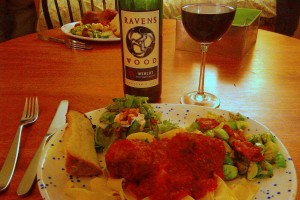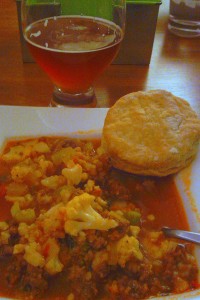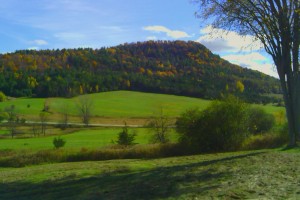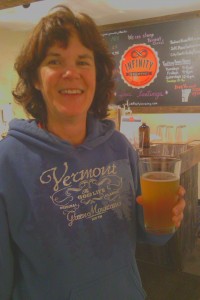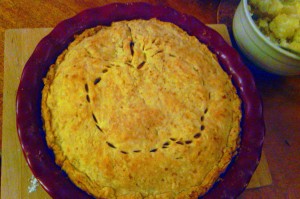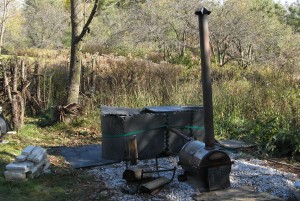My sixteenth farm was Applepath in Charlotte, Vermont.
The Farm
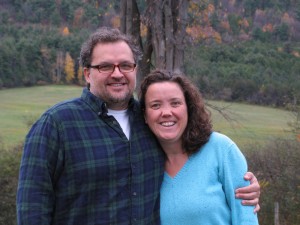 The farmers are Scout and Gia. Scout was raised in an old farmhouse in central Massachusetts. His family didn’t farm but the experience gave him an appreciation of rural areas. He liked Vermont and looked for property in the Burlington region. It was love at first sight when Scout drove down the driveway to check out the one bedroom, two bath saltbox-style house that was for sale on the road to Mt. Philo. He bought the property in 1996. It came with ten acres of overgrown land which Scout and Gia have been clearing. They named the property Applepath because of the volunteer apple trees and Scout’s enjoyment of making paths around the farm. Scout and Gia are working at transforming their land into the farm of their dreams. They don’t want to be commercial farmers; but they would like to be sustainable, growing all their own food, in the future.
The farmers are Scout and Gia. Scout was raised in an old farmhouse in central Massachusetts. His family didn’t farm but the experience gave him an appreciation of rural areas. He liked Vermont and looked for property in the Burlington region. It was love at first sight when Scout drove down the driveway to check out the one bedroom, two bath saltbox-style house that was for sale on the road to Mt. Philo. He bought the property in 1996. It came with ten acres of overgrown land which Scout and Gia have been clearing. They named the property Applepath because of the volunteer apple trees and Scout’s enjoyment of making paths around the farm. Scout and Gia are working at transforming their land into the farm of their dreams. They don’t want to be commercial farmers; but they would like to be sustainable, growing all their own food, in the future.
My Farming Experience
The two weeks I spent at Applepath were like a WWOOFer vacation. I walked through the door to the WWOOFer area of the house and found the other three WWOOFers sitting around a table, knitting. I got out my knitting and joined them. They told me what a WWOOFer’s day was like at Applepath. We needed to work four hours and twenty minutes a day. When we worked those hours was up to us. There was always time during the day to go off the farm and do something–a trip into Burlington or a hike up Mt. Philo. WWOOFers made their own breakfast and lunch from the organic and local foods in the kitchen. The evening meal was cooked by Scout or Gia. As we chatted at the table that first night, Scout, working in the kitchen, prepared coq au vin, a French dish of chicken in wine. As I was soon to experience, dinners here would be nothing short of gourmet.
The next morning I met the other WWOOFers for a leisurely breakfast at 7:30. Scout and Gia had off-farm jobs but were around in the mornings to give us directions for the day’s work. We wished them a good day at work and continued our leisurely breakfast. At around ten we moved from our table and put on work clothes to go outside. Our biggest project was removing invasive buckthorn and Japanese honeysuckle. Buckthorn grows into a large tree and 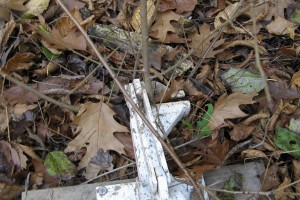 honeysuckle is a choking vine. Scout used a chainsaw and tractor to haul out the big trees. Our job was to pull out the smaller saplings and young trees. Little ones could be pulled out by hand. Bigger ones required a tool I’d never heard of before: a weed wrench. The heavy, silver-colored wrench was laid flat on the ground with the base of the buckthorn between the teeth of the wrench. When I pulled back on the long, wooden handle, the wrench closed and tilted up on its side. This pulled the buckthorn’s roots out of the ground. The weed wrench was heavy and awkward and needed a little practice to easily use. One WWOOFer, Alexandra, took on the challenge of removing the largest of the young buckthorn with the weed wrench. We’d see the top of the forest canopy shake and then Alexandra would appear dragging a prickly buckthorn. A morning’s work was enough to open up a new part of the property to sunlight and a view beyond the forest. Unfortunately, the work would be never ending because buckthorn have developed a sure fire way of spreading their seeds. The neighbor’s yard has many mature buckthorn filled with berries that the birds eat. The berries give the birds diarrhea so the seeds don’t travel very far before they get dropped to start a new plant.
honeysuckle is a choking vine. Scout used a chainsaw and tractor to haul out the big trees. Our job was to pull out the smaller saplings and young trees. Little ones could be pulled out by hand. Bigger ones required a tool I’d never heard of before: a weed wrench. The heavy, silver-colored wrench was laid flat on the ground with the base of the buckthorn between the teeth of the wrench. When I pulled back on the long, wooden handle, the wrench closed and tilted up on its side. This pulled the buckthorn’s roots out of the ground. The weed wrench was heavy and awkward and needed a little practice to easily use. One WWOOFer, Alexandra, took on the challenge of removing the largest of the young buckthorn with the weed wrench. We’d see the top of the forest canopy shake and then Alexandra would appear dragging a prickly buckthorn. A morning’s work was enough to open up a new part of the property to sunlight and a view beyond the forest. Unfortunately, the work would be never ending because buckthorn have developed a sure fire way of spreading their seeds. The neighbor’s yard has many mature buckthorn filled with berries that the birds eat. The berries give the birds diarrhea so the seeds don’t travel very far before they get dropped to start a new plant.
After a couple of hours work, we took a break for lunch and knitting. At around three, we’d head off again to work on our other tasks. It was October so there wasn’t much to do in the gardens. Scout had tilled a garden bed and we raked out the large debris. I dug up some potatoes and planted some acorns. We did some clearing and pruning of plants around the house. Winter was on its way and we were getting the gardens prepared so they’d be ready to go when the snow melted in spring. If we ran out of things to do, we went back to removing buckthorn and huckleberry. Once our four hours and twenty minutes were up, we went back inside for tea and to plan something to do for the late afternoon. While we were out poking around Burlington, hiking to the top of Mt. Philo, tasting some of the world’s best beer, or visiting the Shelburne museum of American folk art, Scout or Gia would arrive home and start cooking the night’s dinner. We’d come home to another gourmet treat and good conversation. Scout told us he learned to cook in Boy Scouts which I found interesting. I never did any cooking in Girl Scouts.
There definitely was a sense of enjoying life at Applepath. There was art on the walls and abundant sunlight in the house. Scout added an artistic touch to the yard by mowing the grass in circles. A few days before I left, he set up an outdoor hot tub heated by a wood fire. We enjoyed it after sampling Vermont maple liqueur. My stay at Applepath was rejuvenating and a perfect ending to six months of WWOOFing on the East Coast.

